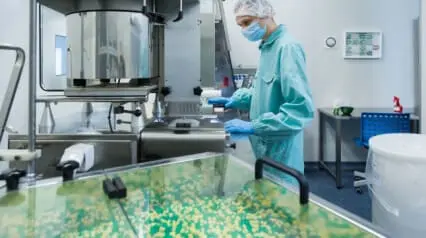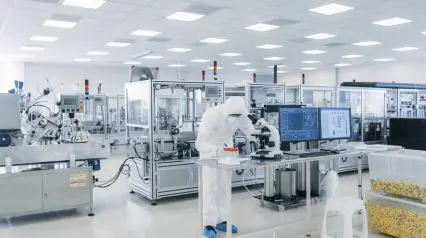What is GMP Validation?
Good Manufacturing Practices (GMP) validation is a systematic approach that involves establishing documented evidence through a series of processes to confirm that a particular manufacturing process will consistently produce products that meet predefined quality standards. GMP validation plays a crucial role in ensuring that pharmaceutical, food, or cosmetics products are manufactured with consistent quality, safety, and efficacy.
Importance
GMP validation ensures that every step of the manufacturing process, from raw material sourcing to the final product’s packaging, is meticulously planned, executed, and monitored. By validating processes, manufacturers can identify and mitigate potential risks, reduce variability, and minimize the likelihood of errors or defects. Ultimately, GMP validation is vital for maintaining the integrity, safety, and efficacy of pharmaceutical, food, and cosmetic products, instilling confidence in both regulatory bodies and consumers.
Types of GMP Validation
There are several types or ways to conduct a GMP validation in your processes. These approaches are set on a different stage of your processes, as follows.
Prospective Validation
Prospective validation involves validating a new manufacturing process before its routine use. It requires comprehensive planning, execution, and documentation of the validation protocol. By establishing the process’s capability to consistently produce quality products, manufacturers can proceed with confidence.
Concurrent Validation
Concurrent validation is performed while a manufacturing process is in routine use. It involves continuous monitoring and data collection to ensure that the process remains within established parameters. Any deviations are promptly addressed, preventing the production of substandard products.
Retrospective Validation
Retrospective validation assesses the historical data of a manufacturing process to ensure its consistency and reliability. This type of validation is useful for processes that have been in use for a significant period but lack formal validation documentation.
Revalidation
Revalidation is conducted periodically to confirm that a manufacturing process remains consistent over time. It is particularly important when changes are made to equipment, procedures, or formulations, as it ensures that the modified process still meets GMP standards.
Key Principles of GMP Validation
GMP validation is guided by several key principles:
Risk Assessment
Before initiating validation, manufacturers conduct a thorough risk assessment to identify potential sources of variability or failure. This assessment informs the validation strategy and ensures that critical aspects are prioritized.
Documentation
Comprehensive documentation is essential at every step of GMP validation. This includes protocols, standard operating procedures (SOPs), and validation reports. Proper documentation provides transparency and accountability.
Training
Personnel involved in validation must be adequately trained to execute procedures accurately and consistently. Training ensures that all team members understand the importance of adhering to established protocols.
Change Control
Any changes to equipment, processes, or materials must undergo a rigorous change control process. This process evaluates the potential impact of changes on product quality and ensures that modifications are appropriately validated.
Explore SafetyCulture Monitoring Solution
Utilize advanced sensor technology to monitor assets, automate vital alerts, implement actions, and report urgent issues.
Talk to an expertGMP Regulatory Guidelines and Standards
GMP validation is underscored by a rigorous framework of regulatory guidelines and standards set by authoritative bodies. Organizations such as the following play pivotal roles in shaping these standards:
- Food and Drug Administration (FDA) – emphasizes robust data integrity practices and risk-based validation approaches
- International Council for Harmonisation (ICH) – stresses harmonization and risk assessment
- European Medicines Agency (EMA) – focuses on a lifecycle approach
- Pharmaceutical Inspection Co-operation Scheme (PIC/S) – underscores comprehensive validation master plans
- World Health Organization (WHO) – advocates risk assessment and collaboration
These guidelines collectively ensure that GMP validation aligns with global quality, safety, and efficacy benchmarks, safeguarding both patient health and the pharmaceutical industry’s credibility. Check out which GMP regulations and preambles apply to you and learn more.




